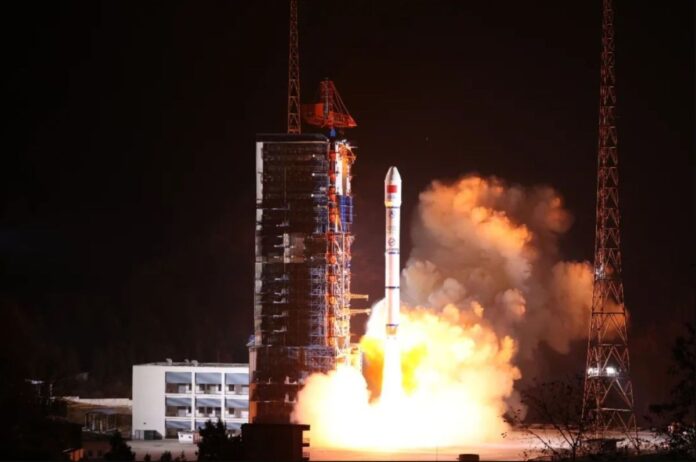China carried out its third space mission of 2023 on Thursday (Jan. 12) with the launch of a commercial telecommunications satellite.
A Long March 2C rocket lifted off from the Xichang Satellite Launch Center Thursday at 11:10 a.m. EST (1810 GMT; 2:10 a.m. on Jan. 13 Beijing time).
The China Aerospace Science and Technology Corporation (CASC), which developed both the rocket and satellite, announced (opens in new tab) the success of the launch within the hour.
Related: The latest news about China’s space program
The APStar 6E satellite was ordered by APT Satellite of Hong Kong and will add to the company’s fleet of telecommunications satellites serving the Asia-Pacific region.
The 4,607-pound (2,090 kilograms) satellite was developed by the China Academy of Space Technology (CAST) and based on a new, small DFH-3E satellite platform featuring all-electric propulsion.
The satellite was sent into an initial low Earth orbit but will spend most of the year raising its altitude to reach geostationary orbit, 22,236 miles (35,786 kilometers) above the equator. APStar 6E launched with a separable propulsion system that will boost the satellite into a higher orbit, after which the satellite’s own propulsion will complete the months-long journey to geostationary orbit.
APStar 6E is planned to operate for a service lifetime of 15 years from a position fixed over 134 degrees east latitude. From there it will provide 30 gigabits per second payload capacity with 25 Ku-band and 3 Ka-band user beams.
The launch was China’s third of the year. CASC, China’s state-owned main space contractor, is planning to launch more than 50 times this year, including sending cargo and crew missions to the country’s Tiangong space station.
Follow us on Twitter @Spacedotcom (opens in new tab) or on Facebook (opens in new tab).

